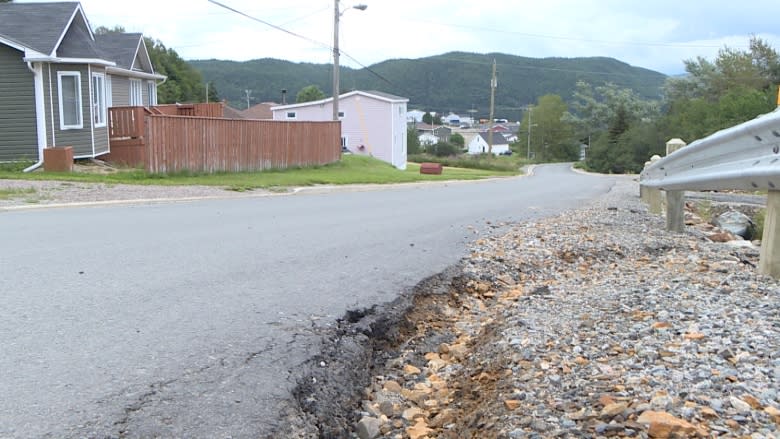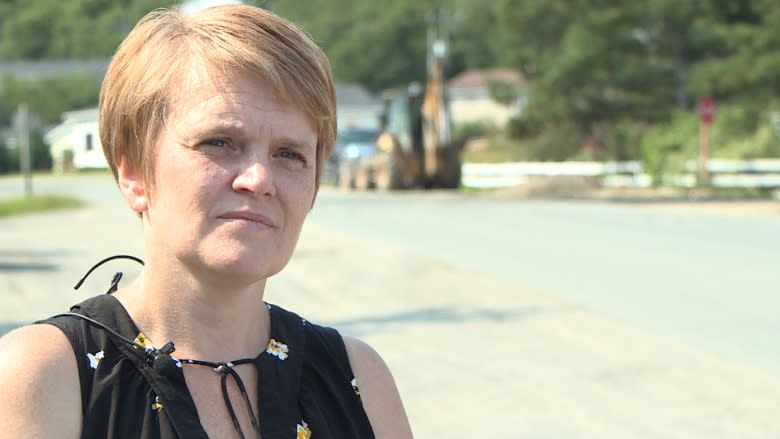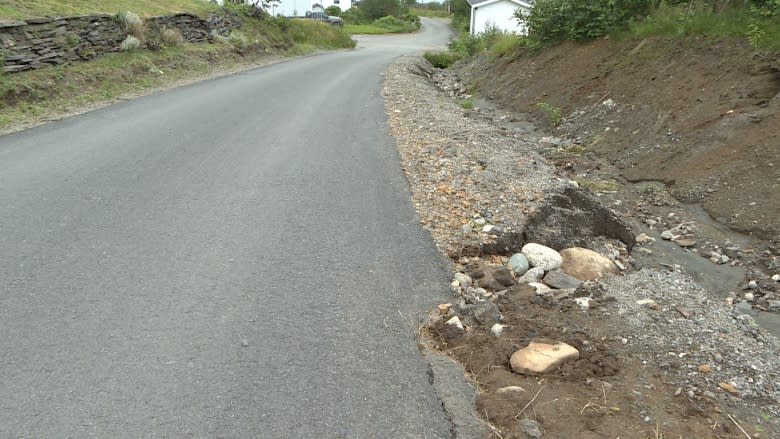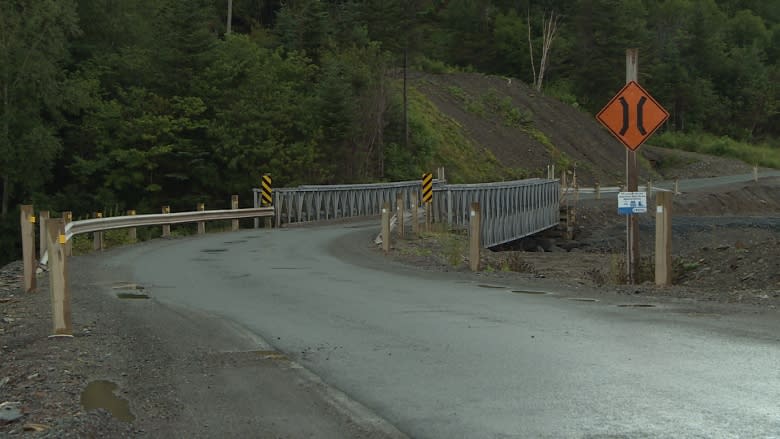Roadwork still an 'itch' for St. Alban's, almost two years after damage
The newest patch of pavement has just been laid, but some roads that have been rebuilt in St. Alban's following the 2016 Thanksgiving storm are already crumbling at the edges.
Town council has already seen rain washouts on road shoulders and by the sides of new pavement on Summit Drive and Rabbit Town Road — and, according to Mayor Gail Hoskins, requests to the province for mitigation measures like ditching and curbs have been denied.
The provincial government is overseeing the reconstruction of town roads because the project falls under the government's disaster relief program. St. Alban's saw extensive damage when the remnants of Hurricane Matthew struck the south coast of Newfoundland.
"From what we've been told numerous times, the funding that we received is only to put the roads back to the way that they were," said Hoskins, who said that the original washouts in 2016 happened "because there were issues with water run-off and drainage."
In a statement, the Department of Municipal Affairs says the disaster relief program is managed by both the provincial and federal governments.
"In some cases, curbs and ditches may be covered; however, in this case, the municipality requested funding for work on the drainage system that went beyond the scope of work covered," wrote Lynn Robinson, a department spokesperson.
She said the ditches and curbs "were considered new construction/non-structural in nature," and that type of mitigation upgrade is not covered.
The mayor said some extra mitigation measures were put in place — like larger culverts, in some areas — but the roads don't have everything that the town council thinks they will need.
"The winds and the rains and stuff we're getting is beyond what we've seen, and it's only going to get worse," she said.
Hoskins said that she would have been willing to forego some road paving if that funding could have been used to install more ditches and curbs.
"A significant amount of money is being put into the roads, because of the disaster, and the community people want to see that we maintain and protect those roads."
Hoskins says the onus is now on her municipality to try to pay for ditching and curb work through another cost-sharing program, or on its own.
She says that will be tough for a town that size — St. Alban's budgeted for $1.3 million in revenues in 2017, and about $125,000 of that was set aside for road work.
"If it had to be the town trying to take on all the roads that were damaged, we'd be long, long, long way out — almost next to impossible."
Roadwork still an 'itch'
The last road to be reconstructed — Long Path Road — was finished last week.
But there's another painful reminder for residents of St. Alban's of the damaging storm in 2016: the Swanger's Cove Bridge.
Residents are still using a temporary, single-lane bridge while it's being reconstructed. A spokesperson for the Department of Transportation and Works said that work is scheduled to finish this season.
"Construction of bridges is a slower process because of the requirements for concrete to cure and gain strength before proceeding to the next stage of construction," wrote Rodney Barney in a statement.
"Bridge construction of the scale at Swanger's Cove is typically a two-season project. This is normal construction time."
Contractors at the site are waiting for girders — a piece used to support the weight of the bridge deck — to be ready before moving forward.
"Until those pieces are done, it will forever be itching everybody's minds," Hoskins said. "No one ever dreamed that we would have lost the Swanger's Cove Bridge."
Hoskins said the temporary bridge has proven challenging for motorcyclists, and the town office has received complaints; The provincial government says the type of wooden deck used on the bridge is considered safe, and is common.
"And until we actually see that all put in place, I think then people can say finally, 'It's done, everything is put back to the way it needs to be put back,' and we'll just move on from there."
Read more from CBC Newfoundland and Labrador





